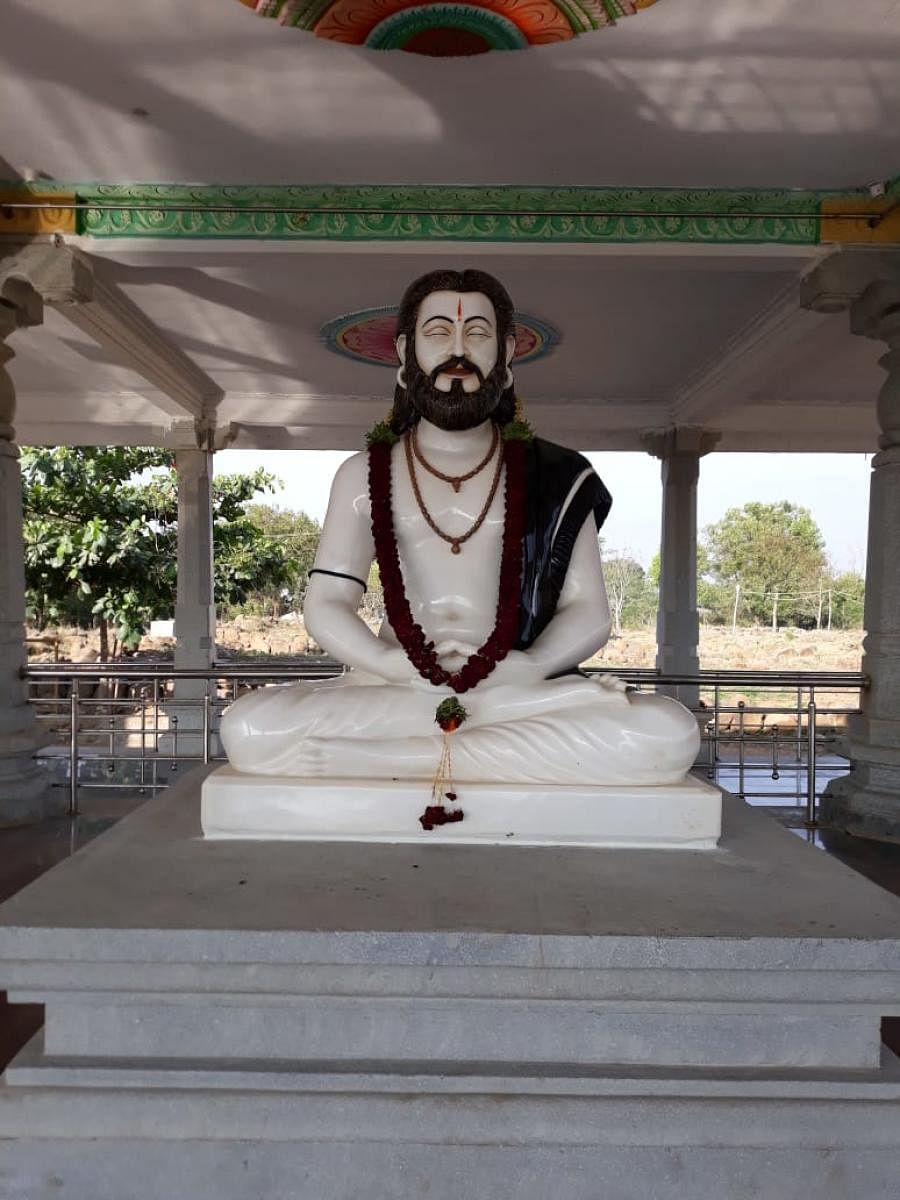

Bada, a tiny village in Haveri, with a little over 4,000 people, has now transformed into a premier tourist destination, with close historical links to Karnataka's history.
Otherwise unknown, Bada assumed significance primarily due to Kanakadasa, the chieftain-turned saint-poet of the 16th century. Born at Bada, Kanakadasa ruled 78 villages under the Vijayanagara Empire. Wars and bloodshed transformed him, compelling to give up princely life and relocate to Kaginele, a small village in the nearby Byadagi taluk.
Till the state government commissioned the Kaginele Development Authority in 2006, the world at large had little information about the history that lay buried at Bada.
Local villagers always believed that Bada had housed a site that was the birthplace of Kanakadasa. In fact, the family of Gurushanthamma Babu Rao Hande, a local resident, had even built a temple in 1965, installing a stone idol of the saint on top of a mound.
In 2008, the then Water Resources Minister Basavaraj Bommai convened a meeting of historians headed by Professor A Sundara and Professor S G Samak. It was decided that the area would be excavated.
A group of over 50 people digging in the area unearthed a huge original structure on a 40 metre long and 30 metres wide mound. The ruins of a portico hall, large meeting hall, royal bed room, kitchen, and other structures built with bricks and black stone were found. Broken jars, glass bangles, copper coins, beads, earthen wares, silver coins, tatrani and worship articles belonging to the Vijayanagara kingdom were also discovered.
The historians identified them as remnants of Kanaka Nayaka’s reign.
The team also discovered an ancient dilapidated temple from the Rashtrakuta period dedicated to Ranganathaswamy, about 100 metres to the west of the site. A 40-feet-deep well was also found, as were also a large number of stone sculptures with archaic Kannada inscriptions.
All these structures were seemingly destroyed during battles with the Adilshahi and Bahmani Sultanates for Bankapur palace, about six kilometres from Bada.
"The historians concluded that the archeological site had housed one of the largest residential structures during the medieval period in India. The Kaginele Development Authority (KDA) special officer Dr S M Jamadar discussed with Bommai and decided to recreate the structure based on the Vijayanagara model fort," Horpete Malleshappa, Commissioner, KDA, recalls.
Bommai conducted several meetings with experts to convert the palace into a centre of attraction, depicting the life and philosophy of Kanakadasa.
The fort, recreated on a four-acre plot, has 20 entrances, 84 windows, a private durbar hall and a memorial hall along with a garden fountain.
Just outside the entrance, a tall life-size statue of Kanakadasa posing as a warrior on horseback draws the visitors' attention. Another statue of Kanakadasa, depicting him penning a composition while seated, adds to the spiritual air of the place.
"The two statues highlight the metamorphosis that bloodshed brought about in Kanakadasa's life," says M P Saravagol, a regular visitor to the place.
"Each of the 50 murals and emboss paintings has historical, literary, philosophical and cultural significance," says Prof Ashok Patil, a lecturer in a local college.
Other amenities include a 100-seater theatre equipped with holographic projection technology, developed at a cost of Rs 1.75 crore, a Kanaka dhyana mandir, Kanaka kalabhavana, gazebos, amphitheatre and lodges for travellers. It is the only place in state and second in India to have this facility.
The entire structure, located on 15.6 acres of land, was inaugurated on January 6, 2013.
"Bada witnessed about one lakh visitors a month before the pandemic. The KDA plans to build a musical fountain, landscape garden, rock garden and a team of like-minded persons following Kanakadasa's philosophy," Malleshappa says.
"The basic principle of all initiatives at Bada is to make Kanakadasa relevant for the present time. Our aim was to popularise him, especially among foreign countries. Bada will surely be Karnataka's chief attraction once the ongoing works are completed," says Chief Minister Basavaraj Bommai.